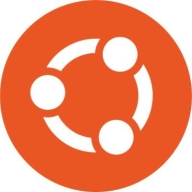


Find out what your peers are saying about Red Hat, Canonical, Oracle and others in Operating Systems (OS) for Business.
A long lifecycle is key to having a good return on investment.
Being able to transform common manual tasks that previously took all day into processes that take an hour, half an hour, or even less, demonstrates clear value.
Red Hat Enterprise Linux has saved us time and increased productivity.
We're very competitive commercially and technically because of it.
We've seen value in Windows Server because the systems work smoothly without any problems.
Windows Server offers excellent value for money, particularly when compared to alternatives.
Red Hat Enterprise Linux (RHEL) support is great, as they go beyond their duty to help resolve issues and provide solutions even for third-party software such as XRDP.
When we do contact customer service, they are generally very knowledgeable and well-versed in our size.
Usually, I send the information, and they have something for me within hours, sometimes even minutes.
They responded well, understood that the issue was not on my end, and provided a patch within two days.
The community around Ubuntu Linux is beneficial, providing answers to questions and assisting with issues.
Ubuntu Linux has a comprehensive knowledge base for self-help.
Our in-house team can also solve most issues.
If you go through a partner who sells or supports Windows, the support could be around seven out of ten, because Windows relies on these partners for assistance.
Microsoft's technical support for Windows Server has been lacking, with rare responses even with premium support.
Many of our applications scale really well, with some having several hundreds of VMs, which we couldn't accomplish on Windows.
Red Hat Enterprise Linux (RHEL) scales very well with the growing needs of our company.
There are no issues with scalability when it comes to Red Hat Enterprise Linux.
In a server environment, it can seamlessly adapt to increased customer demand.
I've worked in companies with 20,000 to 100,000 users, and it scales beautifully without issues.
I rate its scalability a ten out of ten.
It's definitely scalable.
It works consistently with minimal downtime and very few bugs or glitches.
It just works, and that's really the key factor; I can't remember the last time we had a system go down and had to restore it due to a bad patch.
We've not had a service outage with Red Hat in six years.
The system has been completely stable, which makes it deserve a perfect score.
Ubuntu Linux is extremely stable and maintains uptime effectively.
Ubuntu Linux is generally stable, though there can be occasional issues with new hardware integration.
We have experienced no blue screens or crashes and often achieved an uptime of 2,000 to 3,000 days without any issues whatsoever.
Stability-wise, I rate the solution a ten out of ten.
The tool is stable.
Addressing these limitations would significantly enhance the operating system's flexibility and efficiency.
The built-in security features of Red Hat Enterprise Linux were insufficient for our needs, necessitating the implementation of supplementary security measures.
By providing pre-installed, native automation tools within the operating system, Red Hat would streamline processes and improve user efficiency.
There is a push towards integrating AI into software for various purposes like video and sound processing.
Stability issues occur when integrating new components due to physical or technical challenges.
Unlike CentOS, Ubuntu Linux lacks an easily accessible inbuilt repository where dependencies or packages are easily found.
The solution should improve its stability.
From a security perspective, sometimes, malware attacks and hackers take advantage of the tool's vulnerabilities.
Deploying antivirus and firewall software on the server is advisable, but having an external firewall adds an extra layer of security.
It may be considered expensive compared to other solutions like CentOS or Ubuntu, which offer some of the same features without additional costs.
Its pricing has room for improvement because it's more expensive in the local market due to purchasing power parity in India.
Windows Servers base their cost on the number of users and have high licensing fees, while Red Hat Enterprise Linux offers free versions alongside its paid, supported versions.
For an enterprise-wide scalable operating system with professional services, you can select Ubuntu Linux at a reasonable price.
The setup cost is free.
Ubuntu Linux is open-source, leading to cost savings through its free availability.
It is quite expensive.
Previously, a Windows Server with two processors cost around two 154 euros annually, but now it is estimated to be around 3,000 to 4,000 euros for the same configuration.
On a scale of one to ten, with ten being the most expensive, I rate it ten out of ten.
It also has strong security features, is OIS and FIPS certified, and has built-in Linux security configurations.
There is also no downtime.
The operating system allows for the simple addition of kernels, modules, and other applications, making it highly adaptable to various needs.
Ubuntu Linux's open-source nature supports community contributions, bolstering its development and support ecosystem.
Ubuntu Linux supports remote troubleshooting via SSH, allowing connection from anywhere, which is beneficial for troubleshooting server issues.
In terms of security, I am satisfied with Ubuntu Linux and I can rely on its security features more than I can with Windows.
Windows Server is a stable and scalable solution.
The most valuable features of the solution stem from the fact that every Microsoft product is scalable, flexible, secure, and available on a certain budget.
The IP directory is the most valuable feature.



Red Hat Enterprise Linux is recognized for its stability, security, and performance, serving diverse industries with its robust support and seamless cloud deployment capabilities.
Red Hat Enterprise Linux provides comprehensive server applications across cloud environments, featuring tools like Ansible for enhanced user experience. It integrates OpenShift, Identity Management, and automation, supported by extensive documentation. Users seek easier upgrades, enhanced network virtualization support, and improved live patching.
What are the key features of Red Hat Enterprise Linux?In sectors like finance, telecommunications, and education, Red Hat Enterprise Linux is crucial for running stable, secure systems. Its application spans web servers, data management, and containerization through tools like Kubernetes. Organizations adopt it for on-premises, virtualized, and cloud environments, ensuring robust infrastructure management.
Ubuntu Linux is an powerful, easy-to-use, customizable, free, and safe open-source operating system. Some of the world’s top tech corporations, like Intel and Microsoft, rely on Ubuntu Linux to power their operations. It is an operating system that is so trusted by the tech community that it comes pre-installed on global computer vendors like HP and Dell. It is therefore little wonder that Ubuntu Desktop is the world’s most widely-used Linux workstation platform.
Ubuntu Linux comes in a variety of derivatives that enable organizations to select the operating system type that will best meet their needs. There are four derivative types and a number of flavors. The derivative types are:
1. Ubuntu Desktop. As indicated by the name, this derivative is specifically designed to run on laptops and desktops. That said, it is a solution that can be and is used to power other hardware-based systems, such as servers and data centers. However, without the addition of software that primes it to serve as a server program, it only functions on desktops and, as a result, only runs applications that are meant for general use. These can include applications like web browsers and multimedia programs. Users can install it through a prompt-driven process that plays out on their graphical user interfaces.
2. Ubuntu Server. This version of Ubuntu differs from Ubuntu Desktop in a number of ways. The first is that, as suggested by the product name, it is designed for use on an organization’s servers. It is for this reason that Ubuntu Server supports applications that are more focused on the operations of the server and the network that it runs. This differs from Ubuntu Desktop in that Desktop is basically only concerned with the device that is running it. Their methods of installation also differ, as Ubuntu Server has no graphical user interface. Instead, it is installed by way of a process-driven menu.
3. Ubuntu Core. Ubuntu Core is a stripped-down version of Linux that is specifically designed to handle embedded device projects.
4. Ubuntu Cloud. The designers of Ubuntu Cloud focused on providing users with a highly secure and versatile operating system that they can run on the public cloud.
Ubuntu Linux Benefits
Some of the ways that organizations can benefit by deploying Ubuntu Linux’s open-source operating system include:
Ubuntu Linux Features
Hardware autoconfiguration. The hardware drivers that users need in order to configure the hardware correctly so that Ubuntu Linux can be properly installed come built -in to the Ubuntu Linux operating system.
Reviews from Real Users
Ubuntu Linux is an operating system that stands out when compared to many of its competitors. Two of its major advantages are the high level of security that it offers applications that run on it and the low level of maintenance that it actually requires system administrators to do once it has been deployed.
Franco P., the founder and CEO of Applied Labs, writes, “When you have this relationship with Linux and you start working with very secure environments, there's less possibility of being directly attacked by a group of hackers. You will lose less data and you will have a more reliable ecosystem.”
The principal cloud architect at a wholesaler and distributor writes, “With Ubuntu Linux, you can set it and forget it. It requires a low amount of administrative overhead.”
Windows Server is primarily used by organizations for hosting applications, deploying virtual machines, managing user accounts, and supporting enterprise infrastructures. It also assists in virtualization, remote access, web servers, and integrating with cloud environments.
As a key component in enterprise environments, Windows Server supports backend applications and operating systems. It's valued for its robust virtualization capabilities through Hyper-V, enabling organizations to efficiently manage resources and reduce costs. Active Directory facilitates management of user accounts and security policies. Additionally, it excels in hosting SQL databases, file-sharing, and executing communication tasks. The system's integration with Microsoft services enhances its adaptability in cloud deployments and network management. Performance and security features contribute to a reliable platform for managing diverse business operations.
What are the key features of Windows Server?Windows Server is widely adopted in industries requiring stable, secure infrastructure solutions. Enterprises leverage its capabilities for managing databases, hosting business applications, and optimizing virtualization strategies. In sectors like finance and healthcare, enhanced security features and integration with cloud environments prove essential for meeting regulatory requirements and supporting data-intensive processes.